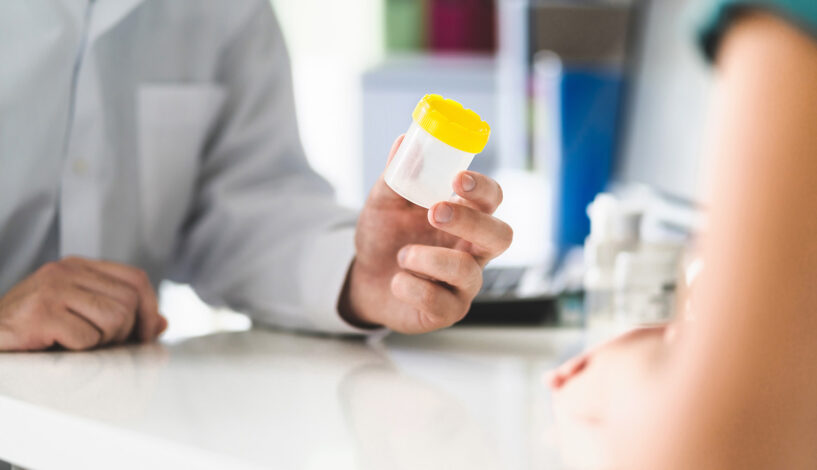
How Long Does It Take for an STD To Show Up?
This question is often not easy to answer and can become rather complicated. This is because there are currently over 20 different kinds of sexually transmitted infections or diseases (STIs or STDs). It is estimated that one in five people will find themselves dealing with an STD at some point in their life.
Whether you have recently had exposure to an STD, had unprotected sex with new sexual partners, or are wondering what the signs are and how soon they will appear, we will cover it in this article.
While this may not be an easy question to answer, this article will discuss the most common different kinds of STDs, the signs to watch out for, and how long it usually takes for symptoms to appear.
What Is an STD and How Is It Spread?
STD stands for sexually transmitted disease, meaning an STD is an infection most often spread from one person to another during sexual contact. Sexually transmitted diseases are also often called sexually transmitted infections, or STIs.
While most STDs spread through sexual contact and sexual intercourse such as vaginal, anal, and oral sex, some STDs can also spread through other forms of physical contact such as kissing or casual skin-to-skin contact. While transmitting STDs is much less common through skin-to-skin contact, it is still possible.
When Do Symptoms Appear?
You must first understand how the infection works to know how long it takes for STD symptoms to appear. After coming into contact with an STD and before you start showing symptoms, your body must take the time to develop antibodies for the STD to recognize it. This period is known as the incubation period, and the length of each STD incubation period can differ.
Some STIs can take months to years to show symptoms, so taking a STD test if you think you have been exposed can be helpful even if you are not seeing any signs yet. While getting test results for an STD is helpful, sometimes you may get a false negative result even if you do have the infection if you test too early during the incubation period.
What Are Some Different Types of STDs?
There are sexually transmitted infections that are more common than others. We’ll discuss some of these common STDs and what early signs to look for.
HPV
The most common STD is HPV or the human papillomavirus. HPV can often cause genital warts, and more serious cases can cause different types of cancer, such as cervical cancer and oropharyngeal cancer, among others. However, mild cases of HPV can go away without causing serious health issues.
HPV can show signs as early as within weeks of contact or as late as years down the road, and sometimes there may be no signs at all. Depending on the type of HPV, the incubation period can be anywhere from one month to 10 years. Because of this, it may be beneficial to take an STI test if you have come into contact with an STD — these tests can be urine tests or swab tests.
Gonorrhea
Gonorrhea is the second most common STI in the United States. It is most often spread through sexual contact and can also be spread from mother to baby during birth.
Gonorrhea specifically infects the different mucous membranes throughout the body, and most infected people are usually asymptomatic. When symptoms are present, unusual urethral discharge is common for men, while increased and unusual vaginal discharge is common for women.
These symptoms usually appear within a couple of weeks, if they appear at all. While the incubation period for gonorrhea is one to 14 days, sometimes it can take a few months or longer for symptoms to appear.
Chlamydia
Chlamydia is a common sexually transmitted disease spread through sexual contact and not through any other physical contact. In women, Chlamydia can damage the reproductive system and cause infertility, making it difficult or impossible to get pregnant. Pregnant women with Chlamydia are also at a higher risk of spreading it to their babies.
The incubation period for Chlamydia is seven to 21 days, but most people do not present with any symptoms, so it usually goes undetected. For those who do have symptoms, however, they usually present as genital pain or unusual discharge in men and women. Symptoms typically appear within one to three weeks and sometimes not until months later.
Genital Herpes
Genital herpes is a common sexually transmitted infection caused by HSV or the herpes simplex virus. This STI commonly spreads through sexual contact but can also be spread through physical contact with the infected area or by physical contact such as kissing.
The incubation period for genital herpes is two to 12 days. Still, many men and women with this sexually transmitted infection do not realize it since the symptoms are usually very mild or completely undetectable.
For those who show signs, the most common symptoms are herpes sores, which look like blisters that can sometimes lead to flu-like symptoms. Sores can appear on or around the genitals, the rectum, or the mouth. Oral herpes can appear with a sore throat, so be sure to get tested if you experience any of these symptoms.
Syphilis
Syphilis is a common STI that presents as a bacterial infection that causes sores on the infected person’s body. These sores make it possible for syphilis to spread through both sexual contact and direct contact with the sores themselves. Syphilis mostly presents itself in the form of sores within a few weeks of contact.
There are multiple types of syphilis, each ranging in how long they take to appear. The incubation period can range from three weeks to 20 years, depending on the type of syphilis and what sexual activity precedes it.
More developed forms of syphilis may not show up until much later in life. If untreated, syphilis can develop into a more severe form called latent syphilis.
Trichomoniasis
Trichomoniasis is a sexually transmitted disease caused by parasites and spread through sexual contact. It cannot spread through skin-to-skin contact and most commonly spreads through unprotected vaginal sex.
Men with trichomoniasis do not typically have STD symptoms, while women do. Women with this STD will most commonly experience a burning sensation when urinating, foul-smelling discharge, and itching from the infection.
As with most STDs, symptoms of trichomoniasis can appear within days of contact or may not appear until much later down the road. Trichomoniasis has an incubation period of five to 28 days, and the symptoms are also likely to come and go.
Main Takeaways
With STDs being such a complex issue, it is important to be educated on this topic and know the signs. STD symptoms can differ for everyone, and there is not one specific answer for when the symptoms might appear.
If you are a sexually active adult, taking precautions against unprotected sex and taking STD tests regularly to stay on top of your sexual health is essential. You may also need to retest if you have suspicions about an STD.
If you are interested in vaccinations to protect against sexually transmitted diseases, talk to your healthcare provider to find the best option.
Sources:
CDC estimates 1 in 5 people in the U.S. have a sexually transmitted infection | CDC
Related Resources



